#German-Estonian art
Text
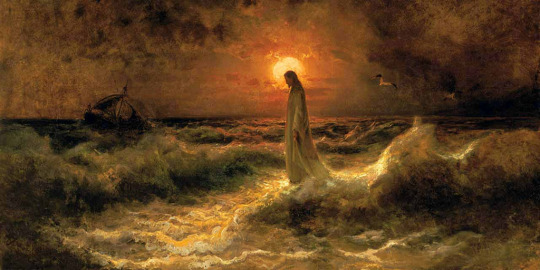
Christ Walking on Water, Julius von Klever, ca. 1880
#art#art history#Julius von Klever#religious art#Biblical art#Christian art#Christianity#New Testament#Gospels#Miracles of Christ#Romanticism#Romantic art#Estonian art#German-Estonian art#19th century art#oil on canvas
3K notes
·
View notes
Text

Chicken feeder, 1839
By Carl Timoleon von Neff
#art#painting#fine art#german painter#baltic german painter#french painter#estonia#estonian culture#culture#classical art#russian art#beauty#oil painting#baltic culture#european art#europe#19th century art#19th century#northern europe#european culture
25 notes
·
View notes
Text
So Our Flag Means Death is an international fandom, but let's look at how many non-English fics there are!
(Turns out it's not just Anglos in this fandom??? Sounds fake :p)
Russian 422
Spanish 115
Ukrainian 71
French 69
Chinese 62
Italian 22
Japanese 22
Brazilian Portuguese 12
Polish 10
Czech 9
Finnish 5
Vietnamese 5
Dutch 3
Belarusian 2
German 2
Farsi 2
Catalan 1
Welsh 1
Estonian 1 - Art, but the notes are in English, so presumably mistagged
Filipino 1
Swedish 1
AO3 allows you to tag a lot of different languages, so there are still plenty of languages that have NO FIC. So, if you know a non-English language, go for it! You never know if someone else in fandom knows that language.
95 notes
·
View notes
Text
Annes of the World
thanks to @gogandmagog's lmm savvy, I'm hunting through the lm montgomery website and I found something really cool - Annes of the World. It shows Anne of Green Gable's covers from across the world, which of course I had to rate below!
Arabic
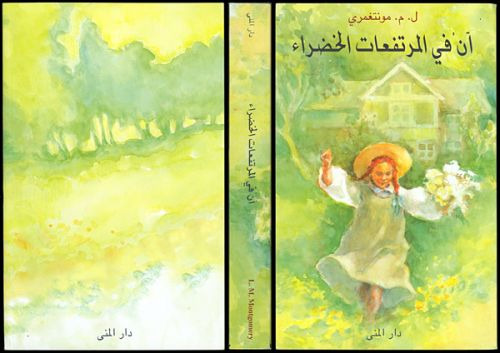
I love this cover because it's like a dreamy summer day - it really reproduces the haziness of summer, and the haziness of a daydream - very fitting for Anne! I also love Anne's body language here, it seems very Anne Shirley to me. I'll give this a strong 9/10.
Chinese
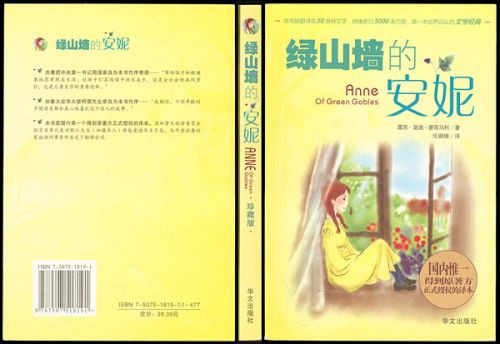
How CUTE is this!! While the drawing is darling (Anne Shirley would definitely sit by an open window nook to daydream), I need covers to commit to being covers personally. I'll rate this a 6/10.
Danish

This has strong Anne with an E vibes to me - kind of that gray tone. Also many many chickens?? I really want to know what the artist was thinking to where they read aogg and was like "you know what this cover needs...more chickens". Unfortunately I don't really like this - I think Anne's expression is odd, her body language is off, and the coloring is not my favorite. Green Gables isn't even green!! It's not even GREEN!! 5/10, with an added point for the Chicken Presence because I am a chicken stan.
Dutch
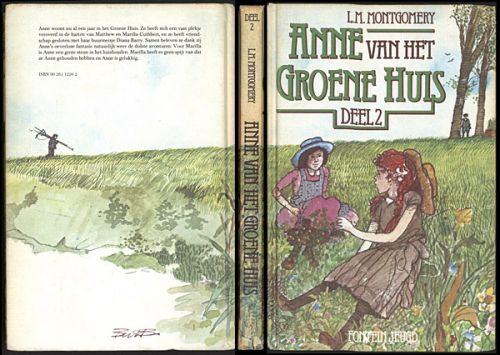
I find this cute, especially because the cover covers the front and back which I LOVE! I especially love how open it makes the scene, and Anne's curly hair is somehow perfect with this. Diana is giving me Maurice Sendak (think Pierre) vibes haha. I'll give this a 6/10.
Estonian

this gave me all the childhood flashbacks. I remember reading so many great illustrated classics (a tale of two cities, anyone?) and poring over the illustrations I liked. I'm really curious to know what the illustrations inside of the book look like now! The cover is beautiful, and I really like they draw the background brush. The only note I have - Anne's hair is NOT red in this, maybe i'm blind but it looks barely auburn. I'll give it a 7/10, teetering dangerously close to 6 because of the hair issue.
French

I have literally nothing to say other than this is the most French Anne I have ever seen and I love it. the SCARF. the BERET. 7/10.
German
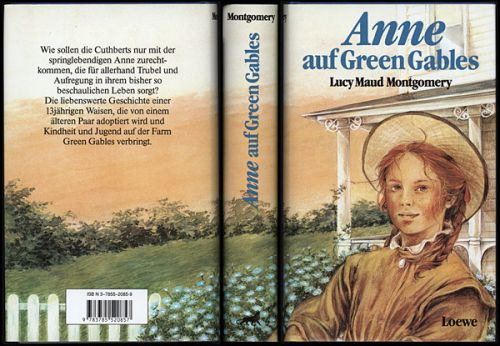
I really love this one. I love the hat, the hair, and the FLOWERS. It really gives the homespun quality that LMM infuses in her stories a lot of the time. Not a huge fan of the Anne here, but the background feels like Green Gables to me, so it feels like home. :') 8/10 for the hominess.
Hebrew

lowkey OBSESSED with this one. highkey need this framed on my wall. I LOVE Anne's body language here. She's clearly daydreaming, and the baggage indicates that she's waiting for Matthew - you can also see the pensiveness in her face. Freckled and redheaded, daydreaming, check and check, alone and uncertain of the future, check. 10/10.
Icelandic

I like this one, especially Anne's grin. Also, again, is that a chicken?? Fascinated by the Nordic need to insert a chicken. 9/10 for being cute. I also love the white flower effect. Stops short of being 10/10 because Anne is wearing pink, and we all know Anne longed to wear pink but thought it didn't go with her red hair!
Italian
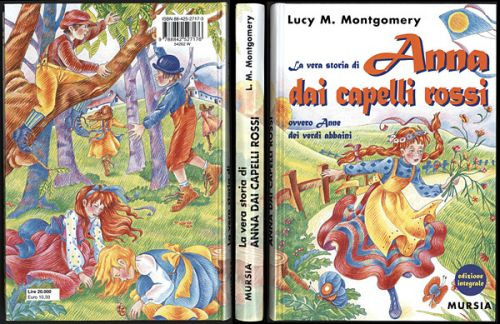
There is SO much going on on this cover. I like the flower crowns and the action shot, but looking at too long makes me go cross-eyed. Sorry to Italy, but this is a 3/10.
Korean

this is short sweet and to the point haha. Anne is daydreaming as the sun sets and a breeze ruffles her hair. cute, but again, I like covers that commit to being covers. 6/10.
Norwegian
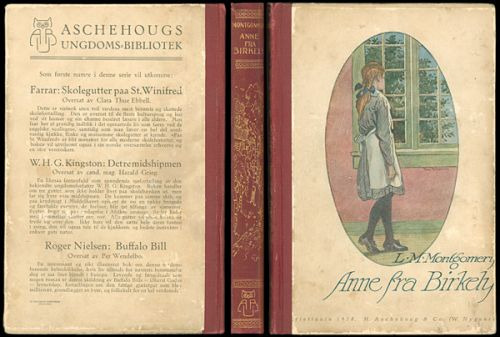
Anxiously looked for a chicken and was disappointed. Tsk tsk tsk, Norway. This has old timey vibes in a way I like. The cover art is too small for me (see repeated complaints above), but I love the continued theme of Anne daydreaming while staring out a window. I give it a 7/10
Polish

This is simplistic in a way I like. It's a little girl setting off on her own towards a forest, with a home only noticeable on a second glance (at least to me). the little figure is very cute too, I like her little shoes and hat. The leaves look too jungle-y to me though for PEI, so I'll say a 6/10.
Slovak

Sorry to Slovak, but this doesn't seem Anne of Green Gables to me at all besides the leaves. This doesn't read like Anne to me, it just seems like a random girl. Bonus points for the puffed sleaves. The leaves are also barely there. 3/10.
Slovenian
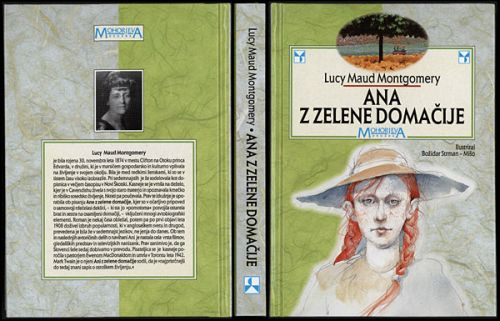
I don't how to feel about this. I don't really like the coloring, but I do like how Anne directly gazes at the reader. Read my story. The coloring gives it an eerie horror movie effect (she looks like a drenched ghost child rising from a lake), so I'm going to have to give it a 3/10.
Spanish

THIS IS CUTE AS A BUTTON. And the Anne is cute as a button. I feel like i am AT the train station. I feel like I AM Matthew walking past an eager Anne. This one feels cinematic, probably due to a higher level of realism. I'll give it an 8/10.
Swedish
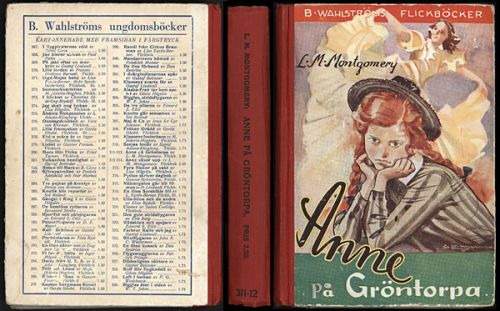
This cover just confuses me. WHO is in the background?? Who is that woman?? Why is Anne so dismal about her?? Why is Anne sulking about this dancing woman in the background (this reminds me of the silly song about the dancing cucumber). Also, Anne's eyebrows are barely there. I'll give this a 5/10 because I can't rate it one way or the other.
Turkish

This one makes me laugh because this looks like an Instagram deck. the way the face is drawn doesn't help. It's an insta pose, it looks insta filtered, the proportions seems weird like it's edited...yeah, this one is a no thanks. 3/10.
I think the Hebrew version wins in the end for me, but I'd love to hear others thoughts 👀
#anne shirley#anne of green gables#lm montgomery#i wish there was something like this for all the other series
43 notes
·
View notes
Note
Bread is a staple food prepared from a dough of flour (usually wheat) and water, usually by baking. Throughout recorded history and around the world, it has been an important part of many cultures' diet. It is one of the oldest human-made foods, having been of significance since the dawn of agriculture, and plays an essential role in both religious rituals and secular culture.
Bread may be leavened by naturally occurring microbes (e.g. sourdough), chemicals (e.g. baking soda), industrially produced yeast, or high-pressure aeration, which creates the gas bubbles that fluff up bread. In many countries, commercial bread often contains additives to improve flavor, texture, color, shelf life, nutrition, and ease of production.
Etymology
The Old English word for bread was hlaf (hlaifs in Gothic: modern English loaf), which appears to be the oldest Teutonic name.[1] Old High German hleib[2] and modern German Laib derive from this Proto-Germanic word, which was borrowed into some Slavic (Czech: chléb, Polish: bochen chleba, Russian: khleb) and Finnic (Finnish: leipä, Estonian: leib) languages as well. The Middle and Modern English word bread appears in Germanic languages, such as West Frisian: brea, Dutch: brood, German: Brot, Swedish: bröd, and Norwegian and Danish: brød; it may be related to brew or perhaps to break, originally meaning "broken piece", "morsel".[3][better source needed]
History
Main article: History of bread
Bread is one of the oldest prepared foods. Evidence from 30,000 years ago in Europe and Australia revealed starch residue on rocks used for pounding plants.[4][5] It is possible that during this time, starch extract from the roots of plants, such as cattails and ferns, was spread on a flat rock, placed over a fire and cooked into a primitive form of flatbread. The oldest evidence of bread-making has been found in a 14,500-year-old Natufian site in Jordan's northeastern desert.[6][7] Around 10,000 BC, with the dawn of the Neolithic age and the spread of agriculture, grains became the mainstay of making bread. Yeast spores are ubiquitous, including on the surface of cereal grains, so any dough left to rest leavens naturally.[8]Woman baking bread (c. 2200 BC); Louvre
An early leavened bread was baked as early as 6000 BC in southern Mesopotamia, cradle of the Sumerian civilization, who may have passed on the knowledge to the Egyptians around 3000 BC. The Egyptians refined the process and started adding yeast to the flour. The Sumerians were already using ash to supplement the dough as it was baked.[9]
There were multiple sources of leavening available for early bread. Airborne yeasts could be harnessed by leaving uncooked dough exposed to air for some time before cooking. Pliny the Elder reported that the Gauls and Iberians used the foam skimmed from beer, called barm, to produce "a lighter kind of bread than other peoples" such as barm cake. Parts of the ancient world that drank wine instead of beer used a paste composed of grape juice and flour that was allowed to begin fermenting, or wheat bran steeped in wine, as a source for yeast. The most common source of leavening was to retain a piece of dough from the previous day to use as a form of sourdough starter, as Pliny also reported.[10][11]
The ancient Egyptians, Greeks, and Romans all considered the degree of refinement in the bakery arts as a sign of civilization.[9]
The Chorleywood bread process was developed in 1961; it uses the intense mechanical working of dough to dramatically reduce the fermentation period and the time taken to produce a loaf. The process, whose high-energy mixing allows for the use of grain with a lower protein content, is now widely used around the world in large factories. As a result, bread can be produced very quickly and at low costs to the manufacturer and the consumer. However, there has been some criticism of the effect on nutritional value.[12][13][14]
Types
Main article: List of breads
Brown bread (left) and whole grain bread
Dark sprouted bread
Ruisreikäleipä, a flat rye flour loaf with a hole
Bread is the staple food of the Middle East, Central Asia, North Africa, Europe, and in European-derived cultures such as those in the Americas, Australia, and Southern Africa. This is in contrast to parts of South and East Asia, where rice or noodles are the staple. Bread is usually made from a wheat-flour dough that is cultured with yeast, allowed to rise, and baked in an oven. Carbon dioxide and ethanol vapors produced during yeast fermentation result in bread's air pockets.[15] Owing to its high levels of gluten (which give the dough sponginess and elasticity), common or bread wheat is the most common grain used for the preparation of bread, which makes the largest single contribution to the world's food supply of any food.[16]Sangak, an Iranian flatbreadStrucia — a type of European sweet bread
Bread is also made from the flour of other wheat species (including spelt, emmer, einkorn and kamut).[17] Non-wheat cereals including rye, barley, maize (corn), oats, sorghum, millet and rice have been used to make bread, but, with the exception of rye, usually in combination with wheat flour as they have less gluten.[18]
Gluten-free breads are made using flours from a variety of ingredients such as almonds, rice, sorghum, corn, legumes such as beans, and tubers such as cassava. Since these foods lack gluten, dough made from them may not hold its shape as the loaves rise, and their crumb may be dense with little aeration. Additives such as xanthan gum, guar gum, hydroxypropyl methylcellulose (HPMC), corn starch, or eggs are used to compensate for the lack of gluten.[19][20][21][22]
Properties
Physical-chemical composition
In wheat, phenolic compounds are mainly found in hulls in the form of insoluble bound ferulic acid, where it is relevant to wheat resistance to fungal diseases.[23]
Rye bread contains phenolic acids and ferulic acid dehydrodimers.[24]
Three natural phenolic glucosides, secoisolariciresinol diglucoside, p-coumaric acid glucoside and ferulic acid glucoside, can be found in commercial breads containing flaxseed.[25]Small home made bread with pumpkin and sunflower seeds
Glutenin and gliadin are functional proteins found in wheat bread that contribute to the structure of bread. Glutenin forms interconnected gluten networks within bread through interchain disulfide bonds.[26] Gliadin binds weakly to the gluten network established by glutenin via intrachain disulfide bonds.[26] Structurally, bread can be defined as an elastic-plastic foam (same as styrofoam). The glutenin protein contributes to its elastic nature, as it is able to regain its initial shape after deformation. The gliadin protein contributes to its plastic nature, because it demonstrates non-reversible structural change after a certain amount of applied force. Because air pockets within this gluten network result from carbon dioxide production during leavening, bread can be defined as a foam, or a gas-in-solid solution.[27]
Acrylamide, like in other starchy foods that have been heated higher than 120 °C (248 °F), has been found in recent years to occur in bread. Acrylamide is neurotoxic, has adverse effects on male reproduction and developmental toxicity and is carcinogenic. A study has found that more than 99 percent of the acrylamide in bread is found in the crust.[28]
A study by the University of Hohenheim found that industrially produced bread typically has a high proportion of FODMAP carbohydrates due to a short rising time (often only one hour). The high proportion of FODMAP carbohydrates in such bread then causes flatulence. This is particularly problematic in intestinal diseases such as irritable bowel syndrome. While in traditional bread making the dough rises for several hours, industrial breads rise for a much shorter time, usually only one hour. However, a sufficiently long rising time is important to break down the indigestible FODMAP carbohydrates. Some flours (for example, spelt, emmer and einkorn) contain fewer FODMAPs, but the difference between grain types is relatively small (between 1 and 2 percent by weight). Instead, 90% of the FODMAPs that cause discomfort can be broken down during a rising time of 4 hours. In the study, whole-grain yeast doughs were examined after different rising times; the highest level of FODMAPs was present after one hour in each case and decreased thereafter. The study thus shows that it is essentially the baking technique and not the type of grain that determines whether a bread is well tolerated or not. A better tolerance of bread made from original cereals can therefore not be explained by the original cereal itself, but rather by the fact that traditional, artisanal baking techniques are generally used when baking original cereals, which include a long dough process. The study also showed that a long rising time also breaks down undesirable phytates more effectively, flavors develop better, and the finished bread contains more biologically accessible trace elements.[29][30]
Culinary uses
Bread pudding
Bread can be served at many temperatures; once baked, it can subsequently be toasted. It is most commonly eaten with the hands, either by itself or as a carrier for other foods. Bread can be spread with butter, dipped into liquids such as gravy, olive oil, or soup;[31] it can be topped with various sweet and savory spreads, or used to make sandwiches containing meats, cheeses, vegetables, and condiments.[32]
Bread is used as an ingredient in other culinary preparations, such as the use of breadcrumbs to provide crunchy crusts or thicken sauces; toasted cubes of bread, called croutons, are used as a salad topping; seasoned bread is used as stuffing inside roasted turkey; sweet or savoury bread puddings are made with bread and various liquids; egg and milk-soaked bread is fried as French toast; and bread is used as a binding agent in sausages, meatballs and other ground meat products.[33]
Nutritional significance
Bread is a good source of carbohydrates and micronutrients such as magnesium, iron, selenium, and B vitamins. Whole grain bread is a good source of dietary fiber and all breads are a common source of protein in the diet, though not a rich one.[34][35]
Crust
Crust of a cut bread made of whole-grainrye with crust crack (half right at the top)
Bread crust is formed from surface dough during the cooking process. It is hardened and browned through the Maillard reaction using the sugars and amino acids due to the intense heat at the bread surface. The crust of most breads is harder, and more complexly and intensely flavored, than the rest. Old wives' tales suggest that eating the bread crust makes a person's hair curlier.[36] Additionally, the crust is rumored to be healthier than the remainder of the bread. Some studies have shown that this is true as the crust has more dietary fiber and antioxidants such as pronyl-lysine.[37]
Preparation
Steps in bread making, here for an unleavened Chilean tortilla
Doughs are usually baked, but in some cuisines breads are steamed (e.g., mantou), fried (e.g., puri), or baked on an unoiled frying pan (e.g., tortillas). It may be leavened or unleavened (e.g. matzo). Salt, fat and leavening agents such as yeast and baking soda are common ingredients, though bread may contain other ingredients, such as milk, egg, sugar, spice, fruit (such as raisins), vegetables (such as onion), nuts (such as walnut) or seeds (such as poppy).[38]
Methods of processing dough into bread include the straight dough process, the sourdough process, the Chorleywood bread process and the sponge and dough process.Baking bread in East Timor
Formulation
Professional bread recipes are stated using the baker's percentage notation. The amount of flour is denoted to be 100%, and the other ingredients are expressed as a percentage of that amount by weight. Measurement by weight is more accurate and consistent than measurement by volume, particularly for dry ingredients. The proportion of water to flour is the most important measurement in a bread recipe, as it affects texture and crumb the most. Hard wheat flours absorb about 62% water, while softer wheat flours absorb about 56%.[39] Common table breads made from these doughs result in a finely textured, light bread. Most artisan bread formulas contain anywhere from 60 to 75% water. In yeast breads, the higher water percentages result in more CO2 bubbles and a coarser bread crumb.
Dough recipes commonly call for 500 grams (about 1.1 pounds) of flour, which yields a single loaf of bread or two baguettes.
Calcium propionate is commonly added by commercial bakeries to retard the growth of molds.[citation needed]
Flour
Main article: Flour
Flour is grain ground into a powder. Flour provides the primary structure, starch and protein to the final baked bread. The protein content of the flour is the best indicator of the quality of the bread dough and the finished bread. While bread can be made from all-purpose wheat flour, a specialty bread flour, containing more protein (12–14%), is recommended for high-quality bread. If one uses a flour with a lower protein content (9–11%) to produce bread, a shorter mixing time is required to develop gluten strength properly. An extended mixing time leads to oxidization of the dough, which gives the finished product a whiter crumb, instead of the cream color preferred by most artisan bakers.[40]
Wheat flour, in addition to its starch, contains three water-soluble protein groups (albumin, globulin, and proteoses) and two water-insoluble protein groups (glutenin and gliadin). When flour is mixed with water, the water-soluble proteins dissolve, leaving the glutenin and gliadin to form the structure of the resulting bread. When relatively dry dough is worked by kneading, or wet dough is allowed to rise for a long time (see no-knead bread), the glutenin forms strands of long, thin, chainlike molecules, while the shorter gliadin forms bridges between the strands of glutenin. The resulting networks of strands produced by these two proteins are known as gluten. Gluten development improves if the dough is allowed to autolyse.[41]
Liquids
Water, or some other liquid, is used to form the flour into a paste or dough. The weight or ratio of liquid required varies between recipes, but a ratio of three parts liquid to five parts flour is common for yeast breads.[42] Recipes that use steam as the primary leavening method may have a liquid content in excess of one part liquid to one part flour. Instead of water, recipes may use liquids such as milk or other dairy products (including buttermilk or yogurt), fruit juice, or eggs. These contribute additional sweeteners, fats, or leavening components, as well as water.[43]
Fats or shortenings
Fats, such as butter, vegetable oils, lard, or that contained in eggs, affect the development of gluten in breads by coating and lubricating the individual strands of protein. They also help to hold the structure together. If too much fat is included in a bread dough, the lubrication effect causes the protein structures to divide. A fat content of approximately 3% by weight is the concentration that produces the greatest leavening action.[44] In addition to their effects on leavening, fats also serve to tenderize breads and preserve freshness.
Bread improvers
Main article: Bread improver
Bread improvers and dough conditioners are often used in producing commercial breads to reduce the time needed for rising and to improve texture and volume and to give antistaling effects. The substances used may be oxidising agents to strengthen the dough or reducing agents to develop gluten and reduce mixing time, emulsifiers to strengthen the dough or to provide other properties such as making slicing easier, or enzymes to increase gas production.[45]
Salt
Salt (sodium chloride) is very often added to enhance flavor and restrict yeast activity. It also affects the crumb and the overall texture by stabilizing and strengthening[46] the gluten. Some artisan bakers forego early addition of salt to the dough, whether wholemeal or refined, and wait until after a 20-minute rest to allow the dough to autolyse.[47]
Mixtures of salts are sometimes employed, such as employing potassium chloride to reduce the sodium level, and monosodium glutamate to give flavor (umami).
Leavening
See also: Unleavened breadA dough trough, located in Aberdour Castle, once used for leavening bread
Leavening is the process of adding gas to a dough before or during baking to produce a lighter, more easily chewed bread. Most bread eaten in the West is leavened.[48]
Chemicals
A simple technique for leavening bread is the use of gas-producing chemicals. There are two common methods. The first is to use baking powder or a self-raising flour that includes baking powder. The second is to include an acidic ingredient such as buttermilk and add baking soda; the reaction of the acid with the soda produces gas.[48] Chemically leavened breads are called quick breads and soda breads. This method is commonly used to make muffins, pancakes, American-style biscuits, and quick breads such as banana bread.
Yeast
Main article: Baker's yeastCompressed fresh yeast
Many breads are leavened by yeast. The yeast most commonly used for leavening bread is Saccharomyces cerevisiae, the same species used for brewing alcoholic beverages. This yeast ferments some of the sugars producing carbon dioxide. Commercial bakers often leaven their dough with commercially produced baker's yeast. Baker's yeast has the advantage of producing uniform, quick, and reliable results, because it is obtained from a pure culture.[48] Many artisan bakers produce their own yeast with a growth culture. If kept in the right conditions, it provides leavening for many years.[49]
The baker's yeast and sourdough methods follow the same pattern. Water is mixed with flour, salt and the leavening agent. Other additions (spices, herbs, fats, seeds, fruit, etc.) are not needed to bake bread, but are often used. The mixed dough is then allowed to rise one or more times (a longer rising time results in more flavor, so bakers often "punch down" the dough and let it rise again), loaves are formed, and (after an optional final rising time) the bread is baked in an oven.[48]
Many breads are made from a "straight dough", which means that all of the ingredients are combined in one step, and the dough is baked after the rising time;[48] others are made from a "pre-ferment" in which the leavening agent is combined with some of the flour and water a day or so ahead of baking and allowed to ferment overnight. On the day of baking, the rest of the ingredients are added, and the process continues as with straight dough. This produces a more flavorful bread with better texture. Many bakers see the starter method as a compromise between the reliable results of baker's yeast and the flavor and complexity of a longer fermentation. It also allows the baker to use only a minimal amount of baker's yeast, which was scarce and expensive when it first became available. Most yeasted pre-ferments fall into one of three categories: "poolish" or "pouliche", a loose-textured mixture composed of roughly equal amounts of flour and water (by weight); "biga", a stiff mixture with a higher proportion of flour; and "pâte fermentée", which is a portion of dough reserved from a previous batch.[50][51]
Before first rising
After first rising
After proofing, ready to bake
Sourdough
Main article: SourdoughSourdough loaves
Sourdough is a type of bread produced by a long fermentation of dough using naturally occurring yeasts and lactobacilli. It usually has a mildly sour taste because of the lactic acid produced during anaerobic fermentation by the lactobacilli. Longer fermented sourdoughs can also contain acetic acid, the main non-water component of vinegar.[52][53][54]
Sourdough breads are made with a sourdough starter. The starter cultivates yeast and lactobacilli in a mixture of flour and water, making use of the microorganisms already present on flour; it does not need any added yeast. A starter may be maintained indefinitely by regular additions of flour and water. Some bakers have starters many generations old, which are said to have a special taste or texture.[52] At one time, all yeast-leavened breads were sourdoughs. Recently there has been a revival of sourdough bread in artisan bakeries.[55]
Traditionally, peasant families throughout Europe baked on a fixed schedule, perhaps once a week. The starter was saved from the previous week's dough. The starter was mixed with the new ingredients, the dough was left to rise, and then a piece of it was saved to be the starter for next week's bread.[48]
Steam
The rapid expansion of steam produced during baking leavens the bread, which is as simple as it is unpredictable. Steam-leavening is unpredictable since the steam is not produced until the bread is baked. Steam leavening happens regardless of the raising agents (baking soda, yeast, baking powder, sour dough, beaten egg white) included in the mix. The leavening agent either contains air bubbles or generates carbon dioxide. The heat vaporises the water from the inner surface of the bubbles within the dough. The steam expands and makes the bread rise. This is the main factor in the rising of bread once it has been put in the oven.[56] CO2 generation, on its own, is too small to account for the rise. Heat kills bacteria or yeast at an early stage, so the CO2 generation is stopped.
Bacteria
Salt-rising bread does not use yeast. Instead, it is leavened by Clostridium perfringens, one of the most common sources of food-borne illness.[57][58]
Aeration
Aerated bread is leavened by carbon dioxide being forced into dough under pressure. From the mid-19th to mid-20th centuries, bread made this way was somewhat popular in the United Kingdom, made by the Aerated Bread Company and sold in its high-street tearooms. The company was founded in 1862, and ceased independent operations in 1955.[59]
The Pressure-Vacuum mixer was later developed by the Flour Milling and Baking Research Association for the Chorleywood bread process. It manipulates the gas bubble size and optionally the composition of gases in the dough via the gas applied to the headspace.[60]
Cultural Significance
A Ukrainian woman in national dress welcoming with bread and salt
Main article: Bread in culture
Bread has a significance beyond mere nutrition in many cultures because of its history and contemporary importance. Bread is also significant in Christianity as one of the elements (alongside wine) of the Eucharist,[61] and in other religions including Paganism.[62]
In many cultures, bread is a metaphor for basic necessities and living conditions in general. For example, a "bread-winner" is a household's main economic contributor and has little to do with actual bread-provision. This is also seen in the phrase "putting bread on the table". The Roman poet Juvenal satirized superficial politicians and the public as caring only for "panem et circenses" (bread and circuses).[63] In Russia in 1917, the Bolsheviks promised "peace, land, and bread."[64][65] The term "breadbasket" denotes an agriculturally productive region. In parts of Northern, Central, Southern and Eastern Europe bread and salt is offered as a welcome to guests.[66] In India, life's basic necessities are often referred to as "roti, kapra aur makan" (bread, cloth, and house).[67]
Words for bread, including "dough" and "bread" itself, are used in English-speaking countries as synonyms for money.[1] A remarkable or revolutionary innovation may be called the best thing since "sliced bread".[68] The expression "to break bread with someone" means "to share a meal with someone".[69] The English word "lord" comes from the Anglo-Saxon hlāfweard, meaning "bread keeper."[70]
Bread is sometimes referred to as "the staff of life", although this term can refer to other staple foods in different cultures: the Oxford English Dictionary defines it as "bread (or similar staple food)".[71][72] This is sometimes thought to be a biblical reference, but the nearest wording is in Leviticus 26 "when I have broken the staff of your bread".[73] The term has been adopted in the names of bakery firms.[74]
See also
Food portal
Bark bread – Scandinavian bread used as famine food
Bread bowl – Round loaf of bread which has had a large portion of the middle cut out to create an edible bowl
Bread clip – Closure device for plastic bags
Bread dildo – Dildo prepared using bread, allegedly made in the Greco-Roman era around 2,000 years ago
Breading – Residue of dried bread
Bread machine – Type of home appliance for baking bread
Bread pan – Kitchen utensil
Crouton – Rebaked breads
List of breads
List of bread dishes – Dishes using bread as a main ingredient, listed by category
List of toast dishes
Quick bread – Bread leavened with agents other than yeast
Sliced bread – Loaf of bread that has been sliced with a machine
Slow Bread – Type of bread made using very little yeast
Sop – Piece of bread or toast that is drenched in liquid and then eaten.
Stuffing – Edible mixture filling a food's cavity
White bread – Type of bread made from white wheat flour
oh fuck yes bread
5 notes
·
View notes
Text
Small Musical Artists/Bands that I think need more attention. (Under 50,000 monthly listeners on Spotify)
The German Art Students (Silly Alt Rock)
The Bomboras (Surf)
Hawaii Samurai (Surf)
Vennaskond (Estonian Anarcho-Punk)
Röövel Ööbik (Estonian Indie Rock)
J.M.K.E (Estonian Punk)
Šiaurės Kryptis (Lithuanian Alt Rock)
FOJE (Lithuanian New Wave)
Linga (Latvian Indie Rock)
Otra Puse (Latvian Rock)
Goodness (Alt Rock)
Chavez (Indie Rock)
Man or Astro-Man? (Spacey Surf)
Bix (Lithuanian Alt Rock)
Free Refills (Synth Punk)
Bile (Industrial Metal)
Isaac Turner (Nice-Sounding Indie)
Powerplant (Synth Punk)
The Space Cossacks (Surf)
The Volcanos (Surf)
The Ghastly Ones (Horror Surf)
The Chop Tops (Psychobilly)
Horrorpops (Psychobilly)
Revolting Cocks (Industrial)
Toxic Lipstick (You'll just have to see for yourself)
Long Tall Texans (Psychobilly)
Legendary Shack Shakers (Rockabilly)
Rinse & Repeat (Absolute Synth Insanity)
Pop Will Eat Itself (Grebo)
Jello Biafra (Punk)
Restless (Rockabilly)
The Surfrajettes (Psychedelic Surf)
Atomic Mosquitos (Surf)
Lard (Industrial Punk)
#indie#music#small band#alt rock#surf#punk#industrial#rockabilly#psychobilly#new wave#synth punk#psychedelia
13 notes
·
View notes
Text
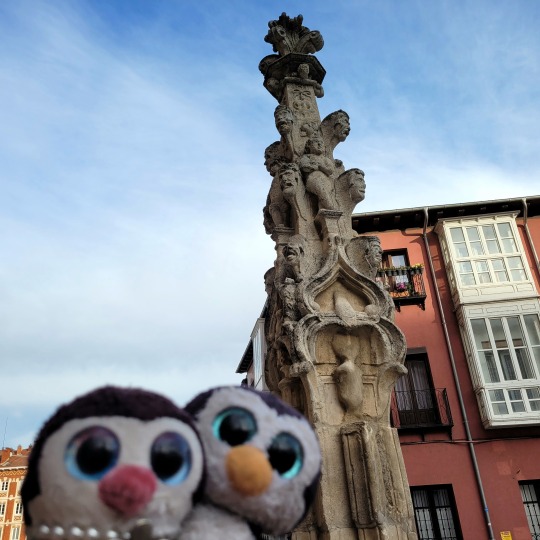
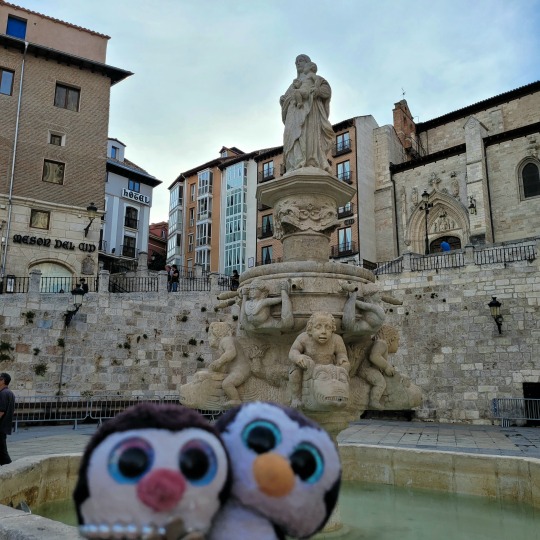
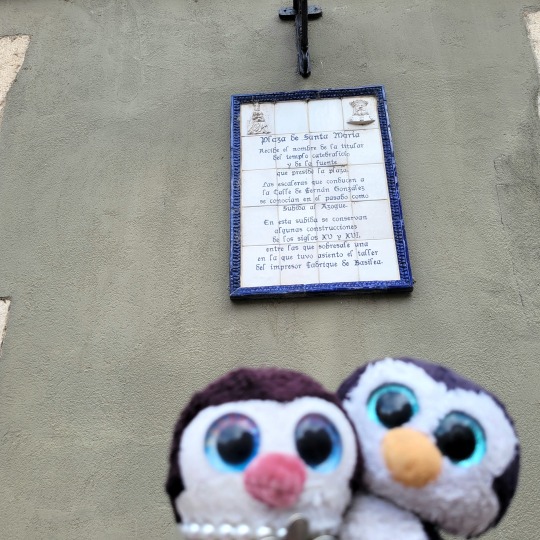






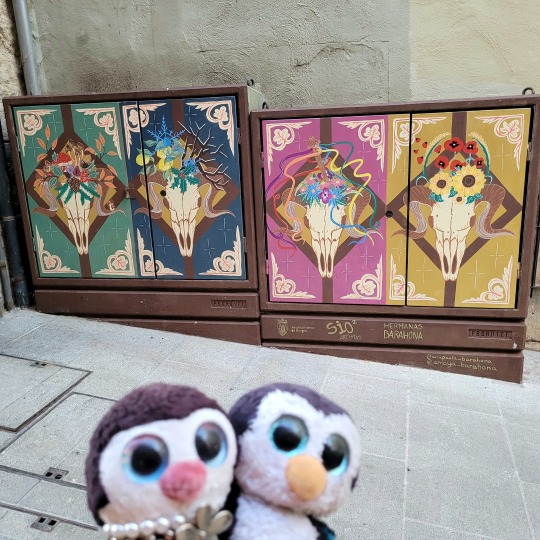
2023/07/08
Algunos detalles en las calles y fachadas de los edificios que muestran el pasado milenario de la ciudad. Incluso una muestra de arte urbano para disimular elementos cotidianos.
Some details in the streets and facades of the buildings that show the millennial past of the city. Even a sample of urban art to hide everyday elements.
Google Translation into French:
Quelques détails dans les rues et les façades des bâtiments qui témoignent du passé millénaire de la ville. Même un échantillon d’art urbain pour cacher des éléments du quotidien.
Google translation into Italian:
Alcuni dettagli nelle strade e nelle facciate dei palazzi che testimoniano il passato millenario della città. Anche un esempio di arte urbana per nascondere elementi quotidiani.
Google Translation into Portuguese:
Alguns detalhes nas ruas e nas fachadas dos edifícios que testemunham o passado milenar da cidade. Até uma amostra de arte urbana para esconder elementos do cotidiano.
Google Translation into German:
Einige Details in den Straßen und Fassaden der Gebäude zeugen von der tausendjährigen Vergangenheit der Stadt. Sogar ein Beispiel urbaner Kunst, um alltägliche Elemente zu verbergen.
Google Translation into Albanisch:
Disa detaje në rrugët dhe fasadat e ndërtesave dëshmojnë për të kaluarën mijëvjeçare të qytetit. Edhe një shembull i artit urban për të fshehur elementet e përditshme.
Google Translation into Armenian:
Որոշ մանրամասներ շենքերի փողոցներում և ճակատներում վկայում են քաղաքի հազարամյա անցյալի մասին: Նույնիսկ քաղաքային արվեստի օրինակ՝ կենցաղային տարրերը թաքցնելու համար։
Google Translation into Bulgarian:
Някои детайли по улиците и фасадите на сградите свидетелстват за хилядолетното минало на града. Дори пример за градско изкуство за скриване на ежедневни елементи.
Google Translation into Czech:
Některé detaily v ulicích a fasádách budov svědčí o tisícileté minulosti města. Dokonce i příklad městského umění skrýt každodenní prvky.
Google Translation into Croatian:
Neki detalji na ulicama i pročeljima zgrada svjedoče o tisućljetnoj prošlosti grada. Čak i primjer urbane umjetnosti za skrivanje svakodnevnih elemenata.
Google Translation into Danish
Nogle detaljer i bygningernes gader og facader vidner om byens tusindårige fortid. Selv et eksempel på urban kunst for at skjule hverdagens elementer.
Google Translation into Slovak:
Niektoré detaily v uliciach a fasádach budov svedčia o tisícročnej minulosti mesta. Dokonca aj príklad mestského umenia na skrytie každodenných prvkov.
Google Translation into Slovenian:
Nekateri detajli na ulicah in pročeljih stavb pričajo o tisočletni preteklosti mesta. Celo primer urbane umetnosti za skrivanje vsakdanjih elementov.
Google Translation into Estonian:
Mõned detailid hoonete tänavatel ja fassaadidel annavad tunnistust linna tuhandeaastasest minevikust. Kasvõi näide linnakunstist igapäevaste elementide varjamiseks.
Google Translation into Suomi:
Jotkut rakennusten kaduilla ja julkisivuissa olevat yksityiskohdat todistavat kaupungin tuhatvuotista menneisyyttä. Jopa esimerkki urbaanista taiteesta jokapäiväisten elementtien piilottamiseksi.
Google Translation into Georgian:
ზოგიერთი დეტალი ქუჩებსა და შენობების ფასადებზე მოწმობს ქალაქის ათასწლოვანი წარსულის შესახებ. თუნდაც ურბანული ხელოვნების მაგალითი ყოველდღიური ელემენტების დასამალად.
Google Translation into Greek:
Μερικές λεπτομέρειες στους δρόμους και τις προσόψεις των κτιρίων μαρτυρούν το χιλιετές παρελθόν της πόλης. Ακόμα και ένα παράδειγμα αστικής τέχνης για να κρύβει καθημερινά στοιχεία.
Google Translation into Hungarian:
Az épületek utcáin és homlokzatán néhány részlet a város ezeréves múltjáról tanúskodik. Akár egy példa a városi művészetre, hogy elrejtse a hétköznapi elemeket.
Google Translation into Dutch:
Sommige details in de straten en gevels van de gebouwen getuigen van het duizendjarige verleden van de stad. Zelfs een voorbeeld van stedelijke kunst om alledaagse elementen te verbergen.
Google Translation into Norwegian:
Noen detaljer i bygningenes gater og fasader vitner om byens tusenårige fortid. Til og med et eksempel på urban kunst for å skjule hverdagslige elementer.
Google Translation into Polish:
Niektóre detale ulic i fasad budynków świadczą o tysiącletniej przeszłości miasta. Nawet przykład sztuki miejskiej, aby ukryć elementy codziennego użytku.
Google Translation into Romanian:
Unele detalii de pe străzile și fațadele clădirilor stau mărturie despre trecutul milenar al orașului. Chiar și un exemplu de artă urbană pentru a ascunde elemente cotidiene.
Google Translation into Russian:
Некоторые детали улиц и фасадов зданий свидетельствуют о тысячелетнем прошлом города. Даже пример городского искусства, скрывающего повседневные элементы.
Google Translation into Serbian:
Неки детаљи на улицама и фасадама зграда сведоче о миленијумској прошлости града. Чак и пример урбане уметности за скривање свакодневних елемената.
Google Translation into Swedish:
Vissa detaljer i byggnadernas gator och fasader vittnar om stadens tusenåriga förflutna. Även ett exempel på urban konst för att dölja vardagliga element.
Google Translation into Turkish:
Sokaklarda ve binaların cephelerindeki bazı detaylar şehrin bin yıllık geçmişine tanıklık ediyor. Gündelik unsurları gizlemek için bir kentsel sanat örneği bile.
Google Translation into Ukrainian:
Деякі деталі вулиць і фасадів будівель свідчать про тисячолітнє минуле міста. Навіть приклад міського мистецтва, щоб приховати побутові елементи.
Google Translation into Arabic:
وتشهد بعض التفاصيل في الشوارع وواجهات المباني على ماضي المدينة الألفي. حتى مثال على الفن الحضري لإخفاء العناصر اليومية.
Google Translation into Bengali:
বিল্ডিংগুলির রাস্তা এবং সম্মুখভাগের কিছু বিবরণ শহরের সহস্রাব্দ অতীতের সাক্ষ্য বহন করে। এমনকি দৈনন্দিন উপাদান আড়াল শহুরে শিল্প একটি উদাহরণ.
Google Translation into Simplified Chinese:
街道和建筑物外墙的一些细节见证了这座城市千年的过去。 甚至是隐藏日常元素的城市艺术的一个例子。
Google Translation into Korean:
거리와 건물 외관의 일부 세부 사항은 도시의 천년 역사를 증언합니다. 일상적인 요소를 숨기는 도시 예술의 예이기도 합니다.
Google Translation into Hawaiian:
ʻO kekahi mau kikoʻī ma nā alanui a me nā ʻaoʻao o nā hale e hōʻike ana i ka makahiki millennial o ke kūlanakauhale. ʻO kahi laʻana o ke kiʻi kūlanakauhale e hūnā i nā mea o kēlā me kēia lā.
Google Translation into Hebrew:
כמה פרטים ברחובות ובחזיתות הבניינים מעידים על העבר המילניום של העיר. אפילו דוגמה לאמנות אורבנית להסתרת אלמנטים יומיומיים.
Google Translation into Hindi:
सड़कों और इमारतों के अग्रभागों के कुछ विवरण शहर के सहस्राब्दी अतीत के गवाह हैं। यहां तक कि रोजमर्रा के तत्वों को छिपाने की शहरी कला का एक उदाहरण भी।
Google Translation into Indonesian:
Beberapa detail di jalanan dan fasad bangunan menjadi saksi masa lalu milenial kota ini. Bahkan contoh seni urban untuk menyembunyikan unsur keseharian.
Google Translation into Japanese:
通りや建物のファサードの細部には、この都市の千年にわたる過去が物語られています。 日常的な要素を隠すための都市芸術の例さえも。
Google Translation into Kyrgyz:
Көчөлөрдөгү жана имараттардын фасаддарындагы айрым деталдар шаардын миң жылдык тарыхына күбө. Ал тургай, күнүмдүк элементтерин жашыруу үчүн шаардык көркөм мисал.
Google Translation into Malay:
Beberapa butiran di jalan dan fasad bangunan menjadi saksi kepada zaman milenium di bandar ini. Malah contoh seni bandar untuk menyembunyikan unsur harian.
Google Translation into Malayalam:
കെട്ടിടങ്ങളുടെ തെരുവുകളിലെയും മുൻഭാഗങ്ങളിലെയും ചില വിശദാംശങ്ങൾ നഗരത്തിന്റെ സഹസ്രാബ്ദ ഭൂതകാലത്തിന് സാക്ഷ്യം വഹിക്കുന്നു. ദൈനംദിന ഘടകങ്ങൾ മറയ്ക്കാൻ നഗര കലയുടെ ഒരു ഉദാഹരണം പോലും.
Google Translation into Mongolian:
Гудамж, байшингийн нүүрэн талын зарим нарийн ширийн зүйлс нь хотын мянга мянган жилийн түүхийг гэрчилдэг. Өдөр тутмын элементүүдийг нуухын тулд хотын урлагийн жишээ ч гэсэн.
Google Translation into Nepali:
सडक र भवनहरूको अनुहारमा केही विवरणहरूले सहरको सहस्राब्दी विगतको साक्षी दिन्छ। दैनिक तत्वहरू लुकाउन शहरी कलाको उदाहरण पनि।
Google Translation into Panjabi:
ਇਮਾਰਤਾਂ ਦੀਆਂ ਗਲੀਆਂ ਅਤੇ ਚਿਹਰੇ ਦੇ ਕੁਝ ਵੇਰਵੇ ਸ਼ਹਿਰ ਦੇ ਹਜ਼ਾਰਾਂ ਸਾਲਾਂ ਦੇ ਅਤੀਤ ਦੀ ਗਵਾਹੀ ਦਿੰਦੇ ਹਨ। ਇੱਥੋਂ ਤੱਕ ਕਿ ਰੋਜ਼ਾਨਾ ਦੇ ਤੱਤਾਂ ਨੂੰ ਛੁਪਾਉਣ ਲਈ ਸ਼ਹਿਰੀ ਕਲਾ ਦੀ ਇੱਕ ਉਦਾਹਰਣ.
Google Translation into Pashtun:
د ودانیو په کوڅو او مخونو کې ځینې توضیحات د ښار د زریزې تیرې شاهدي ورکوي. حتی د ښاري هنر یوه بیلګه د ورځني عناصرو پټولو لپاره.
Google Translation into Persian:
برخی جزئیات در خیابان ها و نماهای ساختمان ها گواه گذشته هزار ساله شهر است. حتی نمونه ای از هنر شهری برای پنهان کردن عناصر روزمره.
Google Translation into Sundanese:
Sababaraha rinci dina jalan jeung facades wangunan jadi saksi ka kaliwat millennial kota. Malah conto seni urban pikeun nyumputkeun unsur sapopoé.
Google Translation into Tagalog:
Ang ilang mga detalye sa mga kalye at harapan ng mga gusali ay nagpapatotoo sa nakalipas na milenyo ng lungsod. Kahit na isang halimbawa ng urban art upang itago ang mga pang-araw-araw na elemento.
Google Translation into Telugu:
వీధులు మరియు భవనాల ముఖభాగాల్లోని కొన్ని వివరాలు నగరం యొక్క వెయ్యేళ్ల గతానికి సాక్ష్యంగా ఉన్నాయి. రోజువారీ అంశాలను దాచడానికి పట్టణ కళ యొక్క ఉదాహరణ కూడా.
Google Translation into Thai:
รายละเอียดบางอย่างบนถนนและด้านหน้าอาคารเป็นเครื่องยืนยันถึงอดีตนับพันปีของเมือง แม้แต่ตัวอย่างศิลปะเมืองที่ซ่อนองค์ประกอบในชีวิตประจำวัน
Google Translation into Urdu:
گلیوں اور عمارتوں کے اگلے حصے میں کچھ تفصیلات شہر کے ہزار سالہ ماضی کی گواہی دیتی ہیں۔ یہاں تک کہ شہری آرٹ کی ایک مثال روزمرہ کے عناصر کو چھپانے کے لیے۔
Google Translation into Uzbek:
Ko‘chalar va binolar fasadidagi ayrim detallar shaharning ming yillik o‘tmishidan guvohlik beradi. Hatto kundalik elementlarni yashirish uchun shahar san'atining namunasi.
Google Translation into Vietnamese:
Một số chi tiết trên đường phố và mặt tiền của các tòa nhà là minh chứng cho quá khứ ngàn năm của thành phố. Thậm chí là một ví dụ về nghệ thuật đô thị để che giấu những yếu tố đời thường.
#Burgos#CastillaYLeon#CyL#España#Art#UrbanArt#Details#Deco#Fountain#Church#Arc#CaminoDeSantiago#Cross#Sculpture#PolloNegroSkyWalker#TravelBlogger#Wanderlust#CoupleGoals#GoodVibes#Plushies#instaGood#Maharashtra#ペンギン
8 notes
·
View notes
Text
Introduction thing ig?
figured I should do this thing
Basic Info
Name: Ajax/Max
Age: 17
Gender: Male
Pronouns: he/it
Languages: English/Estonian [native]/learning German?
Orientation: Aroace [panaesthetic]
Interests: sea, sea creatures, pirates, shanties, Will Wood, folk esq music, foresty things, cottagecore things, autumn coded stuff, clothes/weird clothing design, birds
Other links: https://linktr.ee/tv_ajax
Current fandom: qsmp [Philza]
other fandoms/things/characters I like:
Biggest fan of my own ocs
Critical Role [Vox Machina only for now]
Submas
Team Fortress 2 [mainly just the mercs]
Trying to get into The Magnus Archives [only on s1 L]
Moomins
Five Nights At Freddy's [SUNDROP AND MOONDROP]
Adventure Time [Simon Petrikov, Prismo]
Gravity Falls
Wanna get into Disco Elysium
Dsmp [I still enjoy the story/characters/lore but I do not like most of the people]
Dayshift at Freddy's
How To Train Your Dragon
Owl House
Our Flag Means Death
Good Omens
Stanley Parable
Steven Universe
Undertale
Notes
Using my art is ok as long as it's not for monetary reasons and if you credit me, not needed to ask but I would love to see when you use my art!! ::::D
I switch my current fandoms/interests/hyperfixations a lot/quickly so good luck following me for a specific character/fandom lmao
I revisit fandoms somewhat often though
I am very open to suggestions! if you want me to draw something, be it fandom or even oc it's not unlikely that I'll draw it if you submit an ask or something so feel free to do so! [fyi it will not be a rendered drawing]
Feel free to dm me
I don't think I really have much of a DNI list besides like bigots and generally bad people
I'm kind of a private person? I prefer not to talk too much about me and generally stick to talking about my interests instead of myself [unless I know you]
3 notes
·
View notes
Text
tattoo ideas (can change depends on whag ny mind wants)
for my soon tattoos‚
3rd‚ i’ll ask my parents and sisters to draw something that comes to their mind for me and tattoo it
4th‚ lower breast “kunst est que helistan ma maison‚ liebling” which means “art is what i call my home‚ darling” in german‚ french‚ portuguese‚ estonian‚ italian‚ arabic. it was my 2022 idea‚ i just changed few languages that suits better. its an appreciation for art
5th‚ hips tattoo with tiger and snake innit (looking for the meaning and what it symbolizes)
6th‚ spine tattoo with dragon innit (looking for a meaningful purpose of this tattoo and its meaning itself)
0 notes
Text

Tallinn
"Kadriorg Palace (Estonian: Kadrioru loss, German: Schloss Katharinental) is an 18th-century Petrine Baroque palace in Kadriorg, Tallinn, the capital of Estonia. Both the Estonian and the German name for the palace means "Catherine's valley". It was built in 1718–1725 to Nicola Michetti's designs by Gaetano Chiaveri and Mikhail Zemtsov. The palace currently houses the Kadriorg Art Museum, a branch of the Art Museum of Estonia, displaying foreign art from the 16th to 20th centuries.[1] The building of the Kumu branch of the museum, showing Estonian art from the 18th century onwards is located nearby in the Kadriorg Park.[2]"
0 notes
Note
Hi, I have read your stories, but I don't know how chareters look like. Can you post some picture in here? Then it's easer to read. Sorry about my english, I'm estonian 😐.
Hi! Ev's working on some art for us, but life's busy and art's hard. Allow me to give you some little descriptions :) (Your english is great, friend!)
Fao: 5ft8, broad shoulders and athletically built, long dark brown hair (past his shoulders), heterocromatic brown and hazel eyes. Wears glasses or contacts. Strong jaw, tattoo sleeves on both arms. Heavily influenced by the actor Eoin Macken and Aragorn from Lord of the Rings.
Finn: 6ft4, lanky, flips between well muscled and slim as a result of his health and his seizures. Brown hair, light brown eyes with the inside half of his right eye green. Ev has some old art for him, here!
Harrison: 6ft1, light brown/dark blonde hair, broadly built. Right below the knee amputation (post-army). Max Theriot is our current influence for him. O'Malley tattoo on his ribs.
Taidgh: 6ft2, brown hair, blue eyes. Muscularly built, though slimmer than Harrison. Our influence for him is David Giuntoli.
Ely: 5ft4, petite, blonde with blue eyes. Often needs reading glasses but denies it profusely and steals Fao's. Influenced by Lauren German.
Jess: 5ft7, slim, dark brown hair and hazel eyes, mixed race.
Steve: 6ft1ish, well built, dark brown hair and eyes, looks scary but is a real softie.
Fred: 6ft2, slim, brown hair and eyes.
Sheila: 5ft6, slim, mousy brown hair.
1 note
·
View note
Text
BRUNO - MALAGA
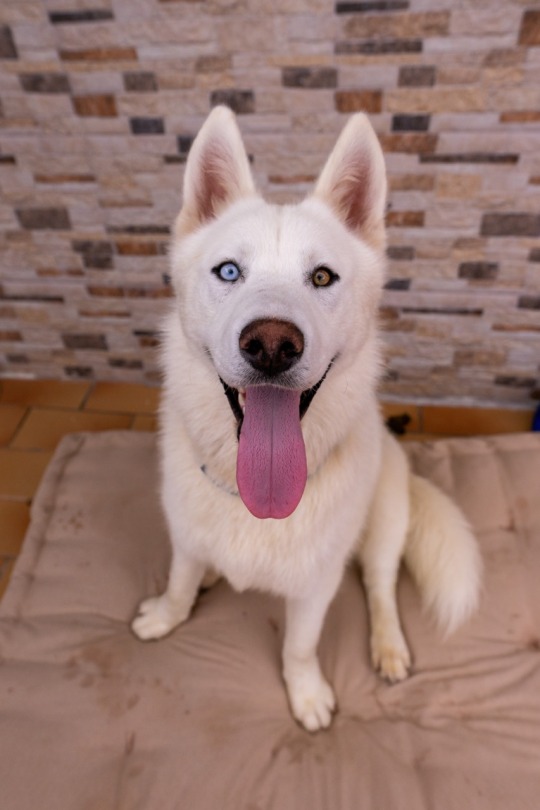
Si eres un verdadero amante de los perros, prepárate para conocer a Bruno, un impresionante Husky Siberiano que te dejará sin aliento! Fue rescatado de la perrera y está ansioso por encontrar un hogar lleno de amor y compañía. Voy a contarte su historia:
Bruno y su inseparable compañero, un Husky Siberiano blanco que sospechamos que es familiar cercano, fueron abandonados en la perrera por un dueño muy irresponsable. Resulta que esa “persona” no podía controlar su entusiasmo por criar huskys sin cesar, lo que generó una sobrepoblación de estos peludos adorables. Pero afortunadamente, Bruno y su compañero fueron rescatados y ahora están en una casa de acogida listos para empezar una nueva vida.
A diferencia de su dramática historia, Bruno es un espíritu tranquilo y relajado. Con su presencia calmada y su actitud serena, es el compañero ideal para aquellos que buscan un poco de paz en sus vidas agitadas. Si alguna vez necesitas un abrazo peludo para relajarte, Bruno está ahí para envolverte en su ternura.
Bruno es todo un experto en el arte de amar. Su afecto desborda, y siempre está dispuesto a compartirlo con su familia humana y con otros perros. No importa la edad, la raza o el tamaño, Bruno se lleva de maravilla con todos. Imagina las aventuras que podríais disfrutar juntos, ¡sería épico!
Con poco más de un año, Bruno es un joven lleno de vitalidad y energía. Le encanta explorar, descubrir nuevos lugares y desatar su espíritu aventurero. Acompañarlo en largos paseos y excursiones será una experiencia increíble, y su mirada cautivadora te recordará constantemente lo especial que es tenerlo a tu lado.
Ahora, Bruno está listo para embarcarse en la emocionante búsqueda de un hogar amoroso. Buscamos personas amantes de los animales y responsables, que puedan brindarle la atención y los cuidados que merece. Este husky leal y cariñoso te ofrecerá una amistad incondicional y te recordará todos los días la importancia de compartir amor.
Si estás en busca de un compañero de vida aventurero, amigable y lleno de amor, Bruno podría ser tu mejor elección. Ayúdame a compartir su historia y hazme saber si estás listo para brindarle un hogar eterno. Juntos podemos asegurarnos de que Bruno tenga el final feliz que se merece y la vida llena de amor que siempre ha anhelado 🐶
IMPORTANTE: Bruno se encuentra en una casa de acogida de Málaga, pero puede viajar a cualquier parte de España. También puedes venir a conocerlo!
TRANSLATE with x
English
Arabic
Hebrew
Polish
Bulgarian
Hindi
Portuguese
Catalan
Hmong Daw
Romanian
Chinese Simplified
Hungarian
Russian
Chinese Traditional
Indonesian
Slovak
Czech
Italian
Slovenian
Danish
Japanese
Spanish
Dutch
Klingon
Swedish
English
Korean
Thai
Estonian
Latvian
Turkish
Finnish
Lithuanian
Ukrainian
French
Malay
Urdu
German
Maltese
Vietnamese
Greek
Norwegian
Welsh
Haitian Creole
Persian
var LanguageMenu; var LanguageMenu_keys=; var LanguageMenu_values=; var LanguageMenu_callback=function(){ }; var LanguageMenu_popupid='__LanguageMenu_popup';
TRANSLATE with
COPY THE URL BELOW
Back
EMBED THE SNIPPET BELOW IN YOUR SITE
Enable collaborative features and customize widget: Bing Webmaster Portal
Back
var intervalId = setInterval(function () { if (MtPopUpList) { LanguageMenu = new MtPopUpList(); var langMenu = document.getElementById(LanguageMenu_popupid); var origLangDiv = document.createElement("div"); origLangDiv.id = "OriginalLanguageDiv"; origLangDiv.innerHTML = "ORIGINAL: "; langMenu.appendChild(origLangDiv); LanguageMenu.Init('LanguageMenu', LanguageMenu_keys, LanguageMenu_values, LanguageMenu_callback, LanguageMenu_popupid); window = LanguageMenu; clearInterval(intervalId); } }, 1);
Read the full article
0 notes
Text

studyblr introduction !
martta, 20, first year uni student, she/her
i speak finnish (native), english (c1), french, german, swedish (~ b1) & russian (a0-a1).
(in the future i’d really like to learn italian and maybe estonian, spanish, other scandinavian languages and/or arabic)
i love languages, literature, film, art (history), history, …
main goals (for the next 1–3 years)
c1 level french
c1 level german
getting into law school :-) i want to switch majors
1 note
·
View note
Text
Photographer Research, Filmmaker Genre
Ingel Vaikla
ARTIST / FILMMAKER
Studying photography in Estonian Academy of Fine Arts and film in Royal Academy of Fine Arts for her Bachelor’s and film in Royal Academy of Fine Arts in Gent for her Master’s, Ingel has curated work that questions the relationship between architecture and its users, along with the representation of architecture in camera based mediums.
Her documentary of ‘The House Guard’ (2015) has been screened at a variety of international film festivals and exhibitions while her recent film ‘Roosenberg’ (2017) had its World Premiere in Amsterdam.
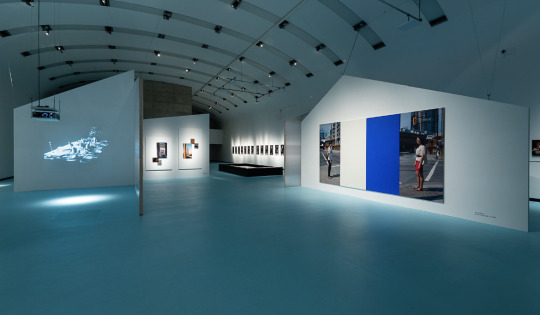




Wim Wenders
FILMMAKER / PHOTOGRAPHER
The German filmmaker, Wim Wenders, was born in 1945 Düsseldorf, Germany. He started his career as an artist and became widely known for his photography and paintings, not to mention his award-winning documentaries and films. Originally studying medicine and philosophy before dropping out to pursue painting in Paris during the 60’s, he worked as an engraver at Johnny Friedlander and experimented with collage, watercolour, ink, drawing, and engraving. Directing his first feature film, ‘Summer in the City’, in 1970, helped him receive widespread recognition for other films such as ‘Paris, Texas’ (1984) and ‘Wings of Desire’ (1987) and documentaries he filmed.
Wenders began to frequently exhibit his photographs in the early 80’s as he often took photos whilst travelling and looking for locations for films, merging his film and art practices for his audience.
Wenders’s films were notable for their lush visual imagery, largely because of the talents of his most frequent collaborator, cinematographer Robby Müller. His work has been shown at galleries and institutions around the world, including the Guggenheim Museum in Bilbao, the Louisiana Museum of Modern Art in Denmark, and the Centre Georges Pompidou in Paris.




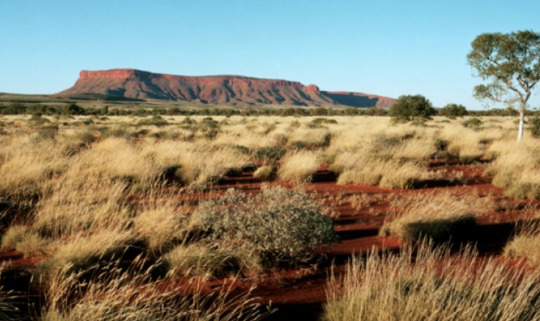
https://www.britannica.com/biography/Wim-Wenders
1 note
·
View note
Text
Week 2: Type Today - Spectral
About
Spectral was commissioned to be primarily used with Docs and Sheets, Google’s collaborative office-suite programs. Designed for on-screen performance, Spectral occupies a narrow fringe of multipurpose text typefaces that also thrive in critical reading environments. A straightforward serif face in seven weights, Spectral aims to offer an efficient, beautiful design that works well in mainstream productivity applications.
Features
Small capitals, case sensitive forms, standard ligatures, discretionary ligatures, proportional lining figures, proportional oldstyle figures, tabular lining figures, tabular oldstyle figures, ordinals, fractions, subscript / inferiors, superscript / superiors, slashed zero, five stylistic sets
Languages
Afrikaans, Albanian, Azeri (lat), Belarusian, Bulgarian, Catalan, Chechen, Croatian, Czech, Danish, Dutch, English, Esperanto, Estonian, Finnish, French, Gaelic (Irish), Galician, German, Hungarian, Icelandic, Ingush, Italian, Kazakh, Kurdish (lat), Kyrghiz, Latvian, Lithuanian, Mongolian (cyr), Mongolian (lat), Norwegian, Polish, Portuguese, Romanian, Russian, Serbian, Slovene, Spain, Swedish, Tadzhik, Tatar, Turkish, Turkmen, Ukrainian, Uzbek (lat)



Authors
Yury Ostromentsky
Graphic and type designer, co-founder of type.today store. Graduate of the Moscow State University of Printing Arts (Department of Arts and Technical Design of Printed Materials). Yury worked as a designer and art director for publishers and design studios. From 2004 to 2012, he was art director with Bolshoy Gorod (Big City) magazine. In 2004, he and lya Ruderman, Dmitry Yakovlev, and Daria Yarzhambek launched the DailyType webpage. Later in 2014, Yury and Ilya Ruderman founded CSTM Fonts type design studio which released Pilar, Big City Grotesque, Kazimir, Navigo, Normalidad, RIA Typeface, Lurk, Loos, Maregraph typefaces and CSTM Xprmntl series, as well as Cyrillic versions of Druk, Graphik, Spectral, Stratos and Apoc. The works by Ostromentsky and CSTM Fonts were awarded by European Design Award, Granshan and Modern Cyrillic Competition.
Ilya Ruderman
Ilya is a type and graphic designer and teacher, lives and works in Barcelona. He is a graduate of the Moscow State University of the Printing Arts (2002), where his graduation project was done under the supervision of Alexander Tarbeev. He has a MA degree in type design from the Type & Media program at the Royal Academy of Art in the Hague (2005). After completing the program, he returned to Moscow, where he has collaborated for a number of media: Kommersant, Afisha, Moskovskiye Novosti, Bolshoi Gorod and Men’s Health Russia. In 2005-2007 he was art director for Afisha’s city guidebooks, following which he was art director for RIA-Novosti, a news agency, for several years. In 2007–2015 he has also supervised the curriculum in type and typography at the British Higher School of Art and Design in Moscow. He has been very active as a consultant on Cyrillic since 2008. In 2014 he founded CSTM Fonts with Yury Ostromentsky.
Typefaces by Ilya Ruderman: BigCity Grotesque Pro, Kazimir, Kazimir Text, Navigo, Permian (a typeface-brand for the city of Perm) and Cyrillic versions of: Austin, Dala Floda, Graphik, Marlene, Moscow Sans (as a consultant), Typonine Sans, Thema.
CSTM Fonts
Ilya Ruderman and Yury Ostromentsky (CSTM Fonts)
They are both graphic and type designers. Founders of CSTM Fonts (2014) type foundry and a new font distributor type.today (2016).
Graduated from Moscow State University of Print (Graphic Design Department), where they took Alexander Tarbeev’s classes. Later Ilya Ruderman graduated from Type & Media (Royal Academy of Art), the Hague, the Netherlands. After graduation he was a tutor of Type&Typography course at British Higher School of Art and Design, Moscow (2008-2015), was an art-director of information agency RIA Novosti. He is an author of cyrillic versions of such typeface as Lava, Graphik, Neutraface and others, that was made for such studios as Typotheque, Commercial Type, Typonine and House Industries. He is an author of: Permian typeface, Big City Grotesque and several other corporate typefaces.
Before 2013 Yury Ostromentsky worked mostly as an editorial designer and art-director of BigCity Magazine, where he used his personal lettering, that was the base of the Pilar typeface, released by CSTM Fonts last year. He is an author of several book series designs and logotypes.
Both typefaces of Ilya Ruderman and Yury Ostromentsky were the winners of such type design competitions as Modern Cyrillic 2009, Modern Cyrillic 2014, Granshan 2011, European Design Award 2012. Kazimir typeface and Tele2 Typefamily, the CSTM Fonts’s latest releases, were among the winners of Granshan 2015.
Jean-Baptiste Levée
Jean-Baptiste Levée works methodically in a process where history and technology are approached altogether within the nuances of artistry. He manufactures functional, yet versatile digital platforms for designers to build upon.
Levée has designed over a hundred typefaces for industry, moving pictures, fashion and media. He is the founder of the independent foundry Production Type, and a partner in tech startup Prototypo. His work has won multiple awards and has been shown internationally in group and solo shows. It is featured in the permanent collections of the French national library (BnF), the Decorative Arts museum of Paris and the National Center of arts (Cnap); of the Newberry Library in Chicago, and several printing museums in Europe. He is a board member at ATypI (Association Typographique Internationale) and consults as a design expert advisor for the French Public Investment Bank (BPI) where he is contributing to the spread of design in innovative businesses.
Levée curates exhibitions on typeface design, organizes research symposiums and teaches typeface design at the Amiens school of Arts & Design and at the University of Corte. He is a typography columnist and editor on Pointypo.com.
Production Type
Based in Paris, Production Type is a digital type design agency founded in 2014 by Jean-Baptiste Levée. Its activities span from the exclusive online distribution of its retail type for design professionals, to the creation of custom typefaces for the industrial, luxury, and media sectors. Production Type’s collection is well known for gathering talented and innovative designers, and strives to release contemporary, unique typefaces for demanding designers. Through numerous awards (D&AD, Type Directors Club, Tokyo TDC…), the agency has also been acclaimed for its projects for Renault, Vanity Fair or Courrèges.


0 notes
Text
SPECTRAL: TYPE TODAY

https://type.today/en/spectral
ABOUT
Spectral was commissioned to be primarily used with Docs and Sheets, Google’s collaborative office-suite programs. Designed for on-screen performance, Spectral occupies a narrow fringe of multipurpose text typefaces that also thrive in critical reading environments. A straightforward serif face in seven weights, Spectral aims to offer an efficient, beautiful design that works well in mainstream productivity applications.
FEATURES
Small capitals, case sensitive forms, standard ligatures, discretionary ligatures, proportional lining figures, proportional oldstyle figures, tabular lining figures, tabular oldstyle figures, ordinals, fractions, subscript / inferiors, superscript / superiors, slashed zero, five stylistic sets
LANGUAGES
Afrikaans, Albanian, Azeri (lat), Belarusian, Bulgarian, Catalan, Chechen, Croatian, Czech, Danish, Dutch, English, Esperanto, Estonian, Finnish, French, Gaelic (Irish), Galician, German, Hungarian, Icelandic, Ingush, Italian, Kazakh, Kurdish (lat), Kyrghiz, Latvian, Lithuanian, Mongolian (cyr), Mongolian (lat), Norwegian, Polish, Portuguese, Romanian, Russian, Serbian, Slovene, Spain, Swedish, Tadzhik, Tatar, Turkish, Turkmen, Ukrainian, Uzbek (lat)
AUTHORS
Yury Ostromentsky
Graphic and type designer, co-founder of type.today store. Graduate of the Moscow State University of Printing Arts (Department of Arts and Technical Design of Printed Materials). Yury worked as a designer and art director for publishers and design studios. From 2004 to 2012, he was art director with Bolshoy Gorod (Big City) magazine. In 2004, he and lya Ruderman, Dmitry Yakovlev, and Daria Yarzhambek launched the DailyType webpage. Later in 2014, Yury and Ilya Ruderman founded CSTM Fonts type design studio which released Pilar, Big City Grotesque, Kazimir, Navigo, Normalidad, RIA Typeface, Lurk, Loos, Maregraph typefaces and CSTM Xprmntl series, as well as Cyrillic versions of Druk, Graphik, Spectral, Stratos and Apoc. The works by Ostromentsky and CSTM Fonts were awarded by European Design Award, Granshan and Modern Cyrillic Competition.
Ilya Ruderman
Ilya is a type and graphic designer and teacher, lives and works in Barcelona. He is a graduate of the Moscow State University of the Printing Arts (2002), where his graduation project was done under the supervision of Alexander Tarbeev. He has a MA degree in type design from the Type & Media program at the Royal Academy of Art in the Hague (2005). After completing the program, he returned to Moscow, where he has collaborated for a number of media: Kommersant, Afisha, Moskovskiye Novosti, Bolshoi Gorod and Men’s Health Russia. In 2005-2007 he was art director for Afisha’s city guidebooks, following which he was art director for RIA-Novosti, a news agency, for several years. In 2007–2015 he has also supervised the curriculum in type and typography at the British Higher School of Art and Design in Moscow. He has been very active as a consultant on Cyrillic since 2008. In 2014 he founded CSTM Fonts with Yury Ostromentsky.
Typefaces by Ilya Ruderman: BigCity Grotesque Pro, Kazimir, Kazimir Text, Navigo, Permian (a typeface-brand for the city of Perm) and Cyrillic versions of: Austin, Dala Floda, Graphik, Marlene, Moscow Sans (as a consultant), Typonine Sans, Thema.
CSTM Fonts
Ilya Ruderman and Yury Ostromentsky (CSTM Fonts)
They are both graphic and type designers. Founders of CSTM Fonts (2014) type foundry and a new font distributor type.today (2016).
Graduated from Moscow State University of Print (Graphic Design Department), where they took Alexander Tarbeev’s classes. Later Ilya Ruderman graduated from Type & Media (Royal Academy of Art), the Hague, the Netherlands. After graduation he was a tutor of Type&Typography course at British Higher School of Art and Design, Moscow (2008-2015), was an art-director of information agency RIA Novosti. He is an author of cyrillic versions of such typeface as Lava, Graphik, Neutraface and others, that was made for such studios as Typotheque, Commercial Type, Typonine and House Industries. He is an author of: Permian typeface, Big City Grotesque and several other corporate typefaces.
Before 2013 Yury Ostromentsky worked mostly as an editorial designer and art-director of BigCity Magazine, where he used his personal lettering, that was the base of the Pilar typeface, released by CSTM Fonts last year. He is an author of several book series designs and logotypes.
Both typefaces of Ilya Ruderman and Yury Ostromentsky were the winners of such type design competitions as Modern Cyrillic 2009, Modern Cyrillic 2014, Granshan 2011, European Design Award 2012. Kazimir typeface and Tele2 Typefamily, the CSTM Fonts’s latest releases, were among the winners of Granshan 2015.
Jean-Baptiste Levée
Jean-Baptiste Levée works methodically in a process where history and technology are approached altogether within the nuances of artistry. He manufactures functional, yet versatile digital platforms for designers to build upon.
Levée has designed over a hundred typefaces for industry, moving pictures, fashion and media. He is the founder of the independent foundry Production Type, and a partner in tech startup Prototypo. His work has won multiple awards and has been shown internationally in group and solo shows. It is featured in the permanent collections of the French national library (BnF), the Decorative Arts museum of Paris and the National Center of arts (Cnap); of the Newberry Library in Chicago, and several printing museums in Europe. He is a board member at ATypI (Association Typographique Internationale) and consults as a design expert advisor for the French Public Investment Bank (BPI) where he is contributing to the spread of design in innovative businesses.
Levée curates exhibitions on typeface design, organizes research symposiums and teaches typeface design at the Amiens school of Arts & Design and at the University of Corte. He is a typography columnist and editor on Pointypo.com.
Production Type
Based in Paris, Production Type is a digital type design agency founded in 2014 by Jean-Baptiste Levée. Its activities span from the exclusive online distribution of its retail type for design professionals, to the creation of custom typefaces for the industrial, luxury, and media sectors. Production Type’s collection is well known for gathering talented and innovative designers, and strives to release contemporary, unique typefaces for demanding designers. Through numerous awards (D&AD, Type Directors Club, Tokyo TDC…), the agency has also been acclaimed for its projects for Renault, Vanity Fair or Courrèges.
0 notes